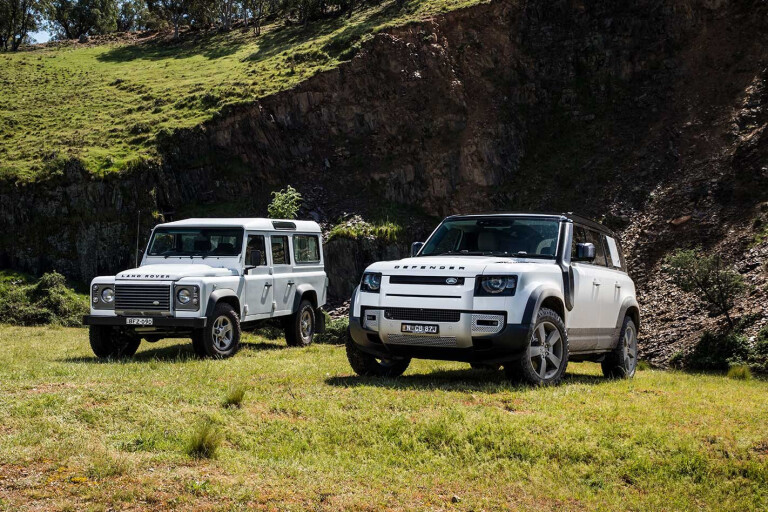
ONE said “Land Rover ‘Offender’.” Another, “what a misguided path.” And others a lot more. The new Defender has certainly upset the Land Rover faithful and I understand their discontent.
The essential problem is this. The ‘old’ Defender, namely the one that stopped production on January 29, 2016, was a very basic and relatively simple 4x4 with a separate chassis and live axles at both ends being what it was, namely the direct descendant of the original 1948 Land Rover. That last of the old Defenders was about as low-tech as it could be, while still meeting mandatory safety and emissions regulations in play at the time.
The new Defender, however, is as complex and sophisticated as any current Land Rover model, Range Rovers included. In fact the new Defender is an evolution of the high-tech aluminium monocoque platform that underpins the current Range Rover.
Adding to the faithful’s angst is that there is no ute or cab-chassis of any description in the current line-up and little prospect of one outside of a recreational-focused integral-tub dual-cab.
Certainly with this new Defender any prospect of rural, mining, forestry, remote-area NGO, or military use is gone. It is purely focused at private use.

Further annoying the Land Rover purists is the fact that even the 90 and 110 names are misleading. In Land Rover-speak, the numbers 90, 110 (and 130) previously referred to the wheelbase in inches whereas the new ‘110’ is built on 119-inch wheelbase and the new ‘90’ is built on a 102-inch wheelbase. Heresy indeed!
Land Rover never set out to make the new Defender as a simple 4x4, it set out to make the Defender the most off-road capable model in the current Land Rover range, which it certainly is. There’s no question there. It may be an evolution of the current RR/RRS/Discovery platform but it’s been completely re-engineered from the ground up to make it both more off-road capable and more off-road durable.
Land Rover’s current owners, India’s Tata Motors, has seemingly the deepest pockets of Land Rover’s many owners, even if both Ford and BMW did invest heavily in the brand, and the new Defender comes across very much as a spare-no-expense exercise.
Land Rover could have gone the low-cost route for the new Defender by recycling one of its older and out-of-production designs, the Discovery 3/4 being the obvious candidate, but one can only speculate on whether this was ever considered.
Land Rover has history here as one of its most successful models of all time and one that saved the company from going broke, the original Discovery, was essentially the mechanicals of the last of the first-generation Range Rovers recycled under a new body.
The Discovery 3/4’s appeal in being the starting point of a new Defender include its box-shaped body, which is functional and has the look of a traditional 4x4, the image you wish to create for Defender. As for the mechanicals the theme should be ‘simple’, so coil springs rather than height-adjustable air springs, six-speed manual and automatic gearboxes, and the lowest-tech 3.0-litre V6 diesel you can get away with emissions wise.
Most of what could be used in a new Defender has in fact been in production before. The Discovery 3/4 is also a body-on-frame design, which opens up the possibility of single and double-cab utes even if the rear independent suspension would need some re-engineering for load carrying.
Things would have no doubt turned out differently had Tata said to Land Rover, “design a cheap, simple and robust Defender, in both ute and wagon models, that we can build and sell in India and export to ‘developing-world’ markets in Africa, the Middle East, SE Asia, and the like”. Ironically all the places the original Land Rovers made their name and reputation. Something like that would also come far closer to keeping the Land Rover faithful here happy as well.

COMMENTS